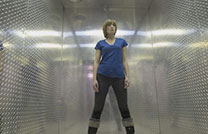Photomatix Pro 5

Create Stunning Photos of High-Contrast Scenes
It's been about five years since I last reviewed the high-dynamic-range (HDR) app, Pho-tomatix Pro. Version 5 adds Contrast Optimizer Tone Mapping, an Exposure Fusion method for real-estate photography, multiple settings in batch operations, and the ability to create faux-HDR images from one low-dynamic-range (LDR) image with Fusion set-tings.
In almost every other HDR app, you're limited to three or seven LDR shots. When I tried Photomatix Pro 5 with 14 photos, it didn't even slow down my Mac.
The new interface has a help field at the bottom left and, while you can still opt to have windows all over the place, Photomatix Pro 5 has a default, unified, two-window approach.
Removing ghosts with Photomatix Pro 5 is powerful without depending too much on magical algorithms, and so is auto-alignment. If that doesn't work (you get tripod and hand-held algorithms), you can draw a selection around the object and decide to have it replaced with the same one in any LDR image of your photo series. In the Tone Mapping algorithm, you can choose Details Enhancer, Tone Compressor, or Contrast Optimizer. Of these three methods, Details Enhancer gives you the most control, while Contrast Op-timizer offers a realistic look where local contrast areas can be fine-tuned to your liking.
Exposure Fusion offers Natural, Intensive, Real Estate, and two automatic methods without controls. There's also a setting for two images, where you can change the weighting of the images in the end result. The Real Estate natural setting is especially useful for showing natural-looking interiors, with the outside clearly visible, in one shot.
With all of the methods, Photomatix Pro 5 offers a range of presets that can be ap-plied as they are, but most people will take them as a starting point and fine-tune until they have their own unique HDR look. Of course, you can also create your own presets.
At the very end of your HDR processing, you get a chance to use the Finishing Touch window, where you can tweak contrast, color, and sharpening. The app also allows you to apply one of three color profiles to the end result—pretty unique in this market niche.
Finally, Photomatix Pro 5 allows you to batch-process images—an especially im-portant feature when you shoot a lot of HDR. The batch window allows you to enter all parameters and use multiple presets for the whole batch. It's quite fast too.
Photomatix comes as a plug-in for Adobe Lightroom, Aperture, and Adobe Pho-toshop. The latter is important if you want to use the tone mapping methods directly from Photoshop CS2 through CC. Exposure Fusion is not available in the tone mapping plug-in for Photoshop. Note that with the Photoshop plug-in, you're not always working with a 32-bit HDR image. In Photoshop CS5, CS6, and CC, Merge to HDR Pro defaults to the low-dynamic range, 16-bit image.
After having spent a good week with this new version, I'm not surprised that this app is seen by many as the gold standard of HDR processing. With Photomatix Pro 5, you can create the typically exaggerated HDR look as easily as a natural representation of reality.
Company:Â HDRsoft Ltd.
Price: $99
Web: www.hdrsoft.com
Rating:Â 5
Hot:Â Realism of natural presets; batch automation; true HDR export
Not:

